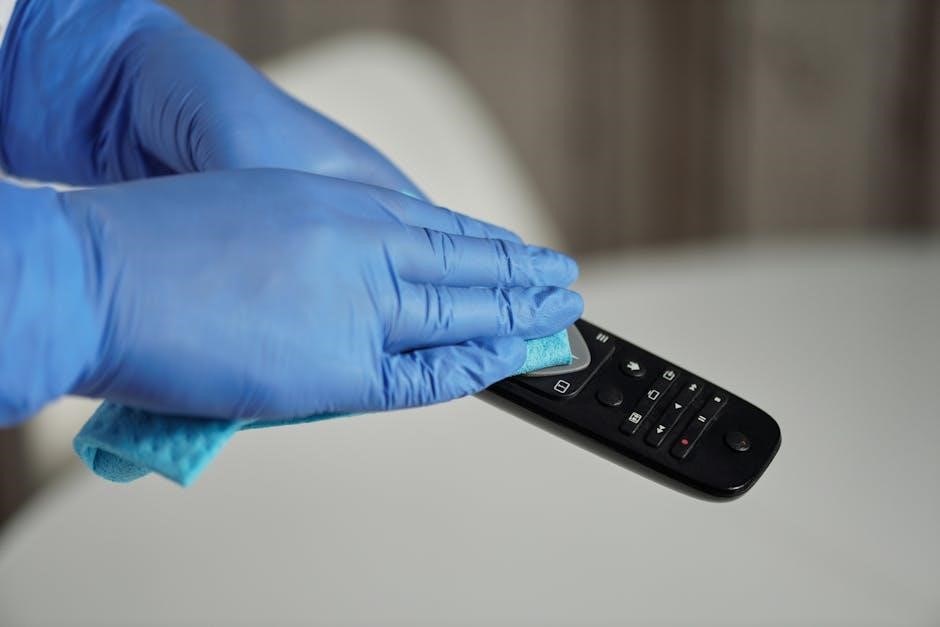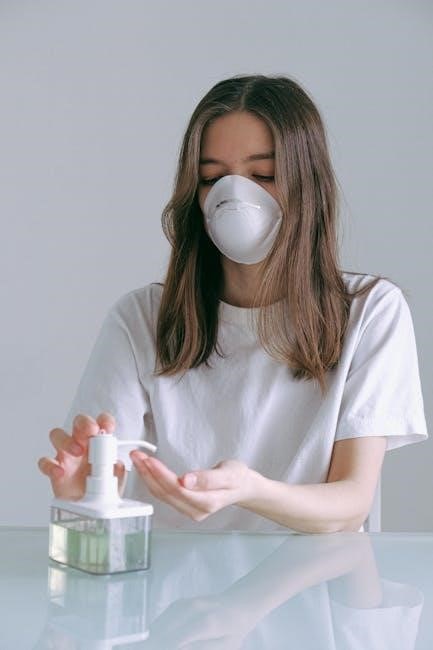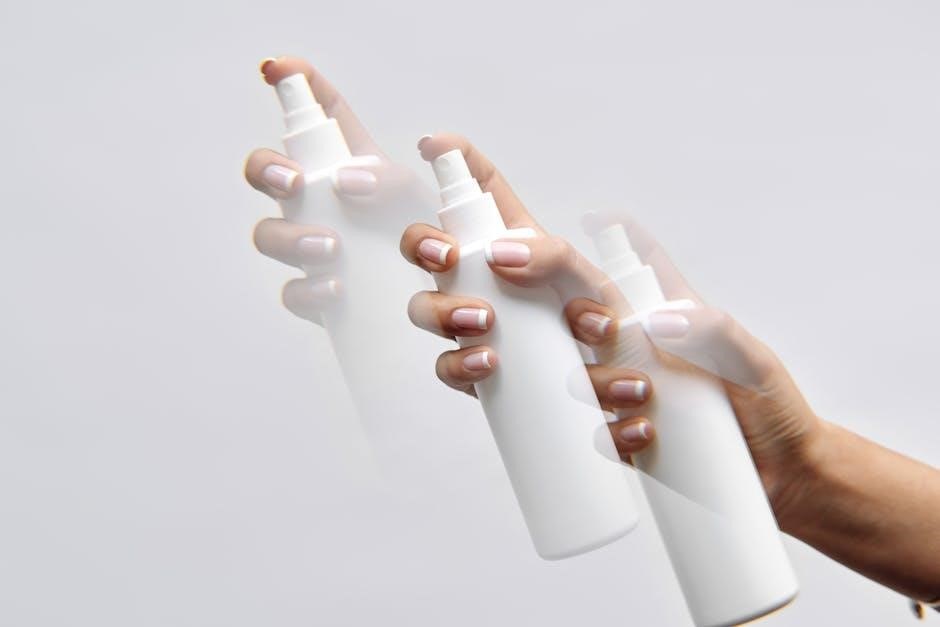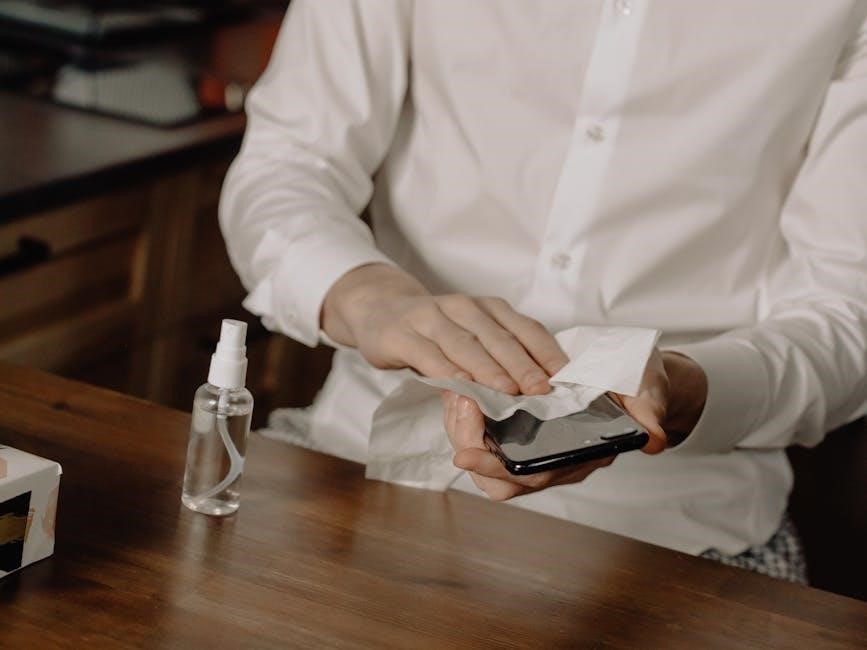Welcome to our guide on the Tommee Tippee Sanitizer, a must-have for parents seeking a safe, efficient, and easy-to-use solution for sterilizing baby essentials. This electric steam sterilizer is designed to eliminate 99.9% of bacteria and germs, ensuring your baby’s feeding accessories remain clean and hygienic. With its large capacity and quick 5-minute cycle, it’s perfect for busy families. In this guide, we’ll explore its benefits, step-by-step usage, maintenance tips, and troubleshooting to help you make the most of your Tommee Tippee Sanitizer.
Overview of Tommee Tippee Sanitizer
The Tommee Tippee Sanitizer is a highly efficient and user-friendly electric sterilizer designed to keep baby products hygienic and safe. It uses advanced UV-C light technology to eliminate harmful bacteria and germs, ensuring a deep and thorough sterilization process. This sanitizer is ideal for bottles, nipples, pacifiers, and other baby essentials, providing peace of mind for parents. Its compact design and easy-to-use interface make it a practical addition to any nursery or kitchen. The sanitizer also features a quick cycle time, making it convenient for daily use. With its focus on safety, efficiency, and ease of maintenance, the Tommee Tippee Sanitizer is a popular choice among parents seeking reliable sterilization solutions for their baby’s items.
Importance of Sterilization for Baby Products
Sterilization is crucial for baby products to ensure they are free from harmful bacteria, viruses, and fungi. Babies have developing immune systems, making them more susceptible to infections. Proper sterilization of bottles, nipples, and pacifiers prevents the spread of germs and reduces the risk of illness. It also ensures that feeding equipment remains hygienic, which is vital for a baby’s health and well-being. Regular sterilization helps maintain a clean environment for baby items, providing peace of mind for parents. This practice is especially important for newborns and young infants, as their bodies are more vulnerable to infections. Sterilizing baby products is a simple yet effective way to protect your child from potential health risks.

Benefits of Using Tommee Tippee Sanitizer
Using the Tommee Tippee sanitizer offers multiple benefits, including enhanced safety, efficient sterilization, and convenience, making it an ideal solution for parents seeking reliable baby care.
Efficiency and Effectiveness
The Tommee Tippee sanitizer is designed to provide rapid and reliable sterilization, ensuring your baby’s items are safe and clean. It uses a combination of steam and heat to eliminate 99.9% of bacteria and viruses, making it highly effective against harmful pathogens. The process is quick, typically taking just a few minutes, which is ideal for busy parents who need to sterilize multiple items throughout the day. This method is also gentle on baby products, preserving their quality and longevity. Additionally, the sanitizer’s efficiency means less downtime between uses, allowing for a seamless cleaning routine. Its effectiveness is backed by thorough testing, ensuring it meets high safety standards for baby care. This makes it a trusted choice for maintaining hygiene and protecting your baby’s health.
Safety and Hygiene
The Tommee Tippee sanitizer prioritizes safety and hygiene, ensuring your baby’s items are thoroughly cleaned and protected from harmful bacteria. It is designed with a secure lid to prevent hot water splashes, reducing the risk of burns during operation. The sterilization process eliminates 99.9% of bacteria and viruses, providing peace of mind for parents. The unit is easy to clean and maintain, preventing the growth of mold or mildew. Additionally, the sanitizer’s compact design allows for safe placement on countertops, keeping it out of reach of children. By adhering to strict safety standards, the Tommee Tippee sanitizer ensures a hygienic environment for your baby’s feeding essentials, making it a reliable and trustworthy solution for daily use. Its focus on safety and hygiene makes it an essential tool for maintaining your baby’s health and well-being.
Cost-Effectiveness and Convenience
The Tommee Tippee sanitizer offers excellent cost-effectiveness and convenience for parents. It is an energy-efficient appliance, reducing long-term electricity costs while providing reliable sterilization. The unit is compact, saving valuable kitchen space and allowing easy storage when not in use. Its simple design and intuitive controls make it user-friendly, ensuring quick and hassle-free operation. Additionally, the sanitizer eliminates the need for frequent replacement of sterilization bags or solutions, saving money over time. Its durability and long-lasting performance make it a practical investment for families. With its ability to sterilize multiple items at once, it streamlines daily routines, offering both convenience and value for parents seeking a reliable and affordable solution for maintaining their baby’s hygiene.

Step-by-Step Instructions for Using Tommee Tippee Sanitizer
Add water, place items inside, close the lid, select the cycle, and let it run. Allow items to cool before removing and storing them safely.
Preparing for Sterilization
Before using the Tommee Tippee Sanitizer, ensure all baby items are clean and free from milk residue. Wash bottles, nipples, and caps with warm soapy water, then rinse thoroughly. Dry items with a clean towel or let air dry. Place items in the sanitizer basket, arranging them to allow proper water circulation. Fill the sanitizer with distilled water to the recommended level to prevent limescale buildup. Add any optional sterilization tablets or liquid as instructed. Close the lid securely to ensure a tight seal. Plug in the device and select the desired sterilization cycle. Allow the machine to complete its cycle before opening. Always follow the manufacturer’s guidelines for preparation to ensure effective sterilization and maintain hygiene standards.
Assembling the Sanitizer
To assemble the Tommee Tippee Sanitizer, begin by carefully unpacking all components from the box. Identify the base unit, sterilization basket, and lid. Place the base on a flat, stable surface and ensure it is properly aligned. Next, insert the sterilization basket into the base, making sure it fits securely and evenly. Place the lid on top of the base, aligning the guides to ensure a proper fit. Gently press down until it clicks into place. Ensure all parts are tightly secured to prevent water leakage during operation. Double-check that the basket is evenly spaced and the lid is sealed correctly. Refer to the user manual for specific alignment instructions. Proper assembly is crucial for effective sterilization and safety.

Operating the Sanitizer
To operate the Tommee Tippee Sanitizer, start by ensuring it is properly assembled and placed on a stable, flat surface. Fill the base unit with the recommended amount of water, as indicated in the user manual. Place the baby bottles, nipples, and other accessories into the sterilization basket, ensuring they are arranged to allow proper steam circulation. Close the lid securely, making sure it clicks into place for a tight seal. Plug in the sanitizer and select the appropriate sterilization cycle using the control buttons. The machine will begin the cycle, emitting steam to kill bacteria and germs. Allow the cycle to complete without opening the lid. Once done, let the items cool slightly before handling. Always follow the manufacturer’s guidelines for optimal performance.
Handling Sterilized Items
Once the sterilization cycle is complete, allow the items to cool for a few minutes before handling. Always use the provided nipple tongs to remove sterilized items from the sanitizer to avoid direct contact and prevent contamination. Ensure your hands are clean before touching the sterilized products. Store the items in a clean, dry place, such as the sanitized storage compartment, to maintain hygiene. If not using the items immediately, leave them in the sanitizer with the lid slightly ajar to allow moisture to escape. Sterilized items can be stored for up to 24 hours if kept in the sanitizer. Always reassemble bottles just before use to ensure they remain sterile. This method ensures safety and convenience for your baby.

Maintenance and Cleaning
Regular cleaning ensures optimal performance. Descale every 3 months to prevent mineral buildup. Dry thoroughly after each use to maintain hygiene and efficiency.
Check for residue regularly.
Cleaning the Sanitizer
Regular cleaning of the Tommee Tippee sanitizer is essential to maintain its efficiency and prevent the buildup of bacteria or residue. After each use, dismantle the sanitizer and wash all components with warm soapy water. Use a soft sponge or cloth to avoid scratching the surfaces. Rinse thoroughly to remove any soap residue. For tougher stains or mineral deposits, mix equal parts water and white vinegar in the sanitizer and run a cycle. Allow the solution to sit for 10 minutes before rinsing. Always dry the sanitizer and its parts with a clean towel after cleaning to prevent water spots and bacterial growth. Regular cleaning ensures optimal performance and prolongs the lifespan of the device.
Descaling the Sanitizer
Descaling the Tommee Tippee sanitizer is crucial to remove mineral buildup from hard water, which can affect performance over time. Start by mixing a descaling solution or white vinegar with water according to the manufacturer’s instructions. Pour the mixture into the water reservoir and run a complete sterilization cycle. Allow the solution to sit for 10 minutes to break down mineral deposits. Rinse the sanitizer thoroughly with fresh water to remove any residue. For severe scaling, repeat the process if necessary. Regular descaling ensures the sanitizer operates efficiently and prevents damage from limescale. Always refer to the user manual for specific guidance, as improper descaling methods may void the warranty. Clean and dry the sanitizer after descaling to maintain hygiene and functionality.
Drying the Sanitizer
Drying the Tommee Tippee sanitizer is essential to prevent bacterial growth and maintain hygiene. After each use, ensure all components are completely dry. Remove any water from the basin and accessories using a clean towel. Place the sanitizer on a flat, stable surface and leave it open to air dry. Avoid covering it while damp, as this can trap moisture. Regularly drying the sanitizer prevents mold and mildew buildup. For thorough drying, disassemble the unit and allow each part to air dry separately. Store the sanitizer in a well-ventilated area when not in use. Proper drying ensures the longevity of the product and maintains its effectiveness in sterilizing baby items. Always follow the manufacturer’s guidelines for drying to uphold safety standards.

Troubleshooting Common Issues
Address common issues like chalky residue, flaky bits, or water remaining in the sanitizer. Regular descaling and thorough cleaning help resolve these problems effectively.
Chalky Residue on Bottles
A chalky residue on bottles after using the Tommee Tippee sanitizer is often caused by mineral deposits in the water. This residue is harmless but can be removed by soaking the bottles in a mixture of equal parts water and white vinegar for about 30 minutes. After soaking, scrub the bottles gently with a soft brush and rinse thoroughly. To prevent this issue, ensure the sanitizer is regularly descaled and use filtered water if possible. Always check the water hardness in your area, as this can contribute to the buildup. Regular maintenance and proper rinsing after sterilization will help minimize residue and keep your baby’s bottles clean and safe.
Flaky Bits in the Sanitizer
Flaky bits in the Tommee Tippee sanitizer are typically caused by limescale buildup from hard water. To address this, descale the unit regularly using a descaling solution or white vinegar. Fill the water reservoir with the solution, run a sterilization cycle, and rinse thoroughly. Repeat if necessary. After descaling, wipe down the interior with a soft cloth to remove any remaining flakes. To prevent future buildup, use filtered or softened water. Regular descaling ensures the sanitizer operates efficiently and prevents residue from transferring to baby items. Always follow the manufacturer’s guidelines for descaling to maintain hygiene and performance. This simple maintenance step keeps your sanitizer in optimal condition and your baby’s items free from residue.
Water Left in the Sanitizer

After each use, it’s essential to ensure no water remains in the Tommee Tippee sanitizer to prevent bacterial growth and maintain hygiene. Always drain the water reservoir thoroughly after sterilization. If water is left standing, especially overnight, it can lead to mold or mildew. To avoid this, empty the reservoir and wipe it dry with a clean cloth. Additionally, leave the lid slightly ajar to allow the interior to air dry. Regularly cleaning and drying the sanitizer prevents moisture buildup, ensuring it remains in good working condition. This simple step helps maintain the effectiveness of the sanitizer and keeps your baby’s items safe and clean. Always prioritize drying to uphold hygiene standards and prolong the product’s lifespan.

Safety Precautions
Always keep the Tommee Tippee sanitizer out of children’s reach and avoid exposure to flammable substances. Ensure proper ventilation and follow the manufacturer’s guidelines strictly. Regular maintenance is crucial for safe operation and hygiene. Never submerge the device in water or use abrasive cleaners, as this may damage the unit. By adhering to these precautions, you ensure a safe and effective sterilization process for your baby’s items. Always prioritize safety to maintain the integrity of the sanitizer and protect your child’s health. Proper usage and care will extend the product’s lifespan and ensure optimal performance. Stay vigilant to prevent accidents and maintain hygiene.
General Safety Tips
Always read the Tommee Tippee sanitizer instructions carefully before use to ensure safe operation. Keep the device away from children and pets to avoid accidents. Place the sanitizer on a stable, heat-resistant surface to prevent tipping or damage. Never leave the unit unattended during operation, as steam can cause burns. Avoid exposing the sanitizer to direct sunlight or extreme temperatures. Ensure the area is well-ventilated to prevent moisture buildup. Follow the recommended water level guidelines to avoid overfilling. Do not use flammable substances near the sanitizer, as steam may ignite them. Regularly inspect the power cord and plug for damage. If damaged, stop use immediately and contact the manufacturer. Always unplug the sanitizer when not in use. By following these safety tips, you can ensure a safe and effective sterilization process for your baby’s items.
Handling Hot Items
When using the Tommee Tippee sanitizer, always handle hot items with care to avoid burns. Use oven mitts or tongs to remove sterilized bottles or accessories from the unit. Place items on a heat-resistant surface to cool down before handling. Never touch the nipples, teats, or other small parts immediately after sterilization, as they retain heat longer. Allow items to cool slightly before assembling or storing them. Avoid placing hot items near children or pets to prevent accidents. If you notice condensation, pat items dry with a clean, lint-free cloth. Never use a microwave to dry sterilized items, as this can damage the products or create hot spots. Always prioritize caution when handling hot items to ensure safety and effectiveness.
Accessories and Additional Equipment
The Tommee Tippee sanitizer works seamlessly with compatible accessories like nipple tongs, storage boxes, and cleaning brushes. These tools enhance efficiency and organization for optimal use.
Nipple Tongs and Other Accessories
Nipple tongs are essential for safely handling sterilized bottle parts, preventing direct contact and reducing contamination risks. Designed for precision, they allow easy retrieval of small items like nipples and rings from the sanitizer. Additionally, other accessories like storage boxes and cleaning brushes complement the Tommee Tippee sanitizer. Storage boxes keep sterilized items organized and clean, while cleaning brushes help maintain the sanitizer’s hygiene. These accessories are crafted to fit seamlessly with the system, ensuring efficiency and convenience. By using these tools, parents can maintain the highest standards of cleanliness and organization, making the sterilization process easier and more effective for daily use.

Storage and Organization
Proper storage and organization are crucial for maintaining the sanitizer’s efficiency. Store the unit in a dry, clean space to prevent moisture buildup and bacterial growth. Keep accessories like tongs and bottles in designated areas to ensure easy access and maintain hygiene standards. Regularly organizing the storage space helps prevent clutter and extends the lifespan of the sanitizer and its components. Always follow the manufacturer’s guidelines for storage to ensure optimal performance and safety.
Short-Term Storage
For short-term storage, ensure the Tommee Tippee sanitizer is completely dry to prevent moisture buildup. After use, wipe the unit with a soft cloth to remove any residue. Store the sanitizer in an upright position to avoid water spilling or stagnation. Keep it away from direct sunlight and moisture-prone areas to maintain hygiene. If not in use for a few days, detach all accessories and store them separately in a dry, clean container. This prevents bacterial growth and ensures the sanitizer remains ready for its next use. Regularly cleaning and organizing the storage space helps maintain the unit’s efficiency and prolongs its lifespan. Always follow the manufacturer’s guidelines for short-term storage to ensure optimal performance and safety.
Long-Term Storage
For long-term storage of the Tommee Tippee sanitizer, ensure it is thoroughly cleaned and dried to prevent mold or mildew. Disconnect all components, including the power cord and accessories, and store them in a separate, dry container. Use the original packaging if available to protect the unit from dust and damage. Place the sanitizer in a cool, dry location away from direct sunlight and moisture. Before storing, descale the unit to remove mineral deposits, as these can cause damage over time. Avoid stacking heavy objects on top of the sanitizer to maintain its structural integrity. When retrieving for use, inspect for any signs of damage or wear and ensure all parts are still functional. Proper long-term storage ensures the sanitizer remains in excellent condition for future use.
The Tommee Tippee sanitizer is an essential tool for maintaining the hygiene and safety of baby products. Its efficiency, ease of use, and effectiveness make it a valuable investment for parents. By following the instructions and maintenance tips, you can ensure the sanitizer performs optimally and lasts for a long time. Proper sterilization and storage practices not only protect your baby from harmful germs but also extend the lifespan of your baby products. Always prioritize safety precautions and refer to the troubleshooting guide if issues arise. With consistent care and attention, the Tommee Tippee sanitizer will continue to provide reliable service, giving you peace of mind knowing your baby’s items are clean and safe. Regular maintenance ensures it remains a trusted companion in your parenting journey.

Frequently Asked Questions
For optimal use, how often should bottles be sterilized? Typically, after each use. Can the sanitizer clean other items like pacifiers? Yes, it’s safe for most baby accessories. How long does a cycle take? Usually around 5 minutes.
Do I Need to Sterilize Bottles?
Sterilizing bottles is essential to ensure your baby’s health and safety. Germs and bacteria can easily grow on bottles, especially in milk residue, posing a risk to your baby’s immune system. The Tommee Tippee sanitizer provides a convenient and effective way to sterilize bottles, killing 99.9% of bacteria. Sterilization is particularly important for newborns, as their immune systems are still developing. Even after washing, bottles may harbor microorganisms, so sterilizing regularly is crucial. Using the Tommee Tippee sanitizer ensures bottles are safe for your baby to use. Sterilization should be done before every feeding, especially for babies under 6 months or those with weakened immune systems. This step is vital for maintaining hygiene and preventing infections.
How to Reassemble Bottles After Sterilization
After sterilizing your baby bottles using the Tommee Tippee sanitizer, reassembling them is a straightforward process. First, ensure all parts are completely dry to prevent water spots. Start by attaching the nipple to the ring and cap, making sure they are securely tightened. Next, screw the ring and nipple assembly onto the bottle neck until it fits snugly. Finally, place the bottle lid on top to keep the contents clean. Always check for any residual water in the nipple or bottle to avoid drips. Regularly inspect the nipple for wear and tear, and replace it if necessary. Proper reassembly ensures your baby’s bottles remain hygienic and functional for feeding.




